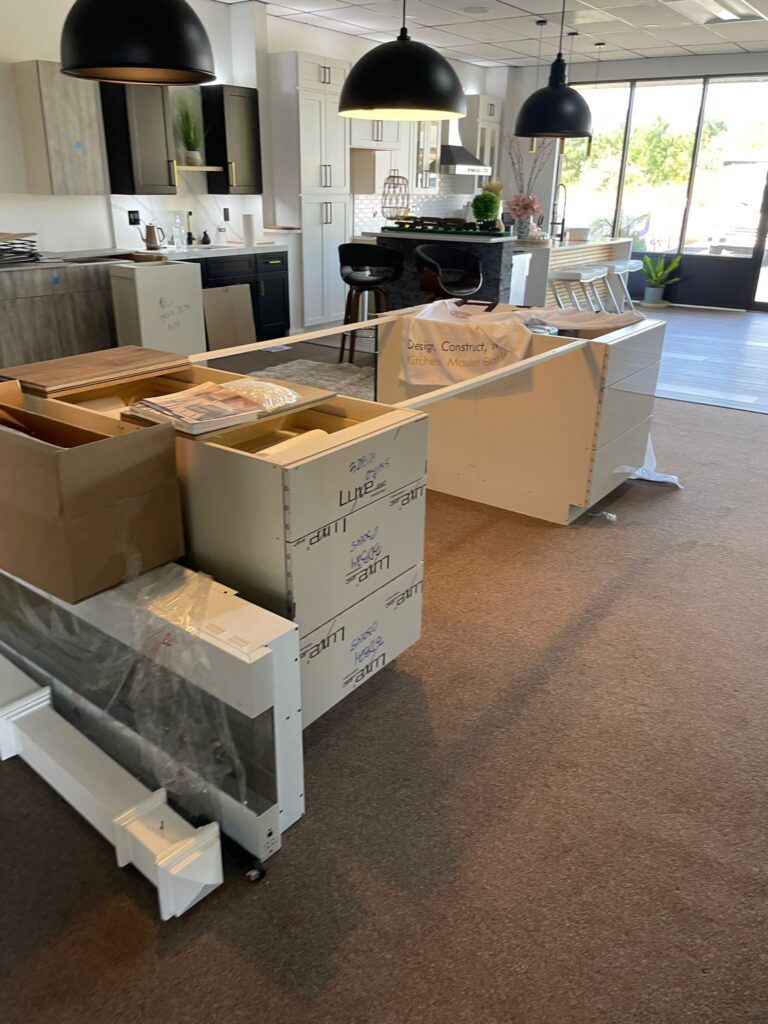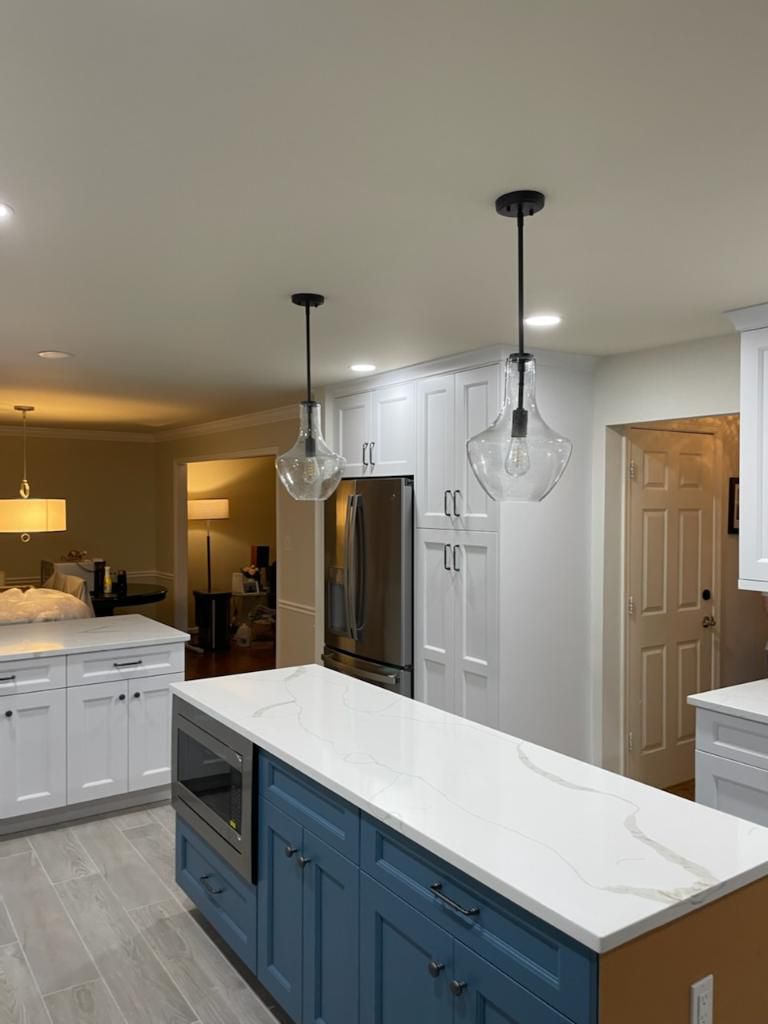Whether you’re looking to learn kitchen countertops, either granite or quartz, you’ve come to the right place.
According to CraftCountertops.us, homeowners spend anywhere between 10% and 15% of their overall kitchen and/or bathroom renovation budget when installing new granite countertops.
No matter how you look at it, that’s a significant portion of your renovation budget.
But because a countertop can be one of the most prominent features in these rooms, the money you spend on your countertops is well-worth it in the end.
With that said, knowing how to properly measure your counter space can go a long way in helping you figure out the overall costs of your renovation project.
Having a proper idea of the dimension of your counter space is vital to help you avoid over or under-ordering materials.
But don’t worry!
Learning how to properly and accurately measure your granite countertops is a breeze. And by using only a few simple tools and some basic math, you’ll be able to measure, sketch, and roughly estimate the cost of your countertop renovation.
In the following article, we’ll teach you how to create a basic sketch of your counter space, which can help speed up the process when getting quotes for new countertops.
Making A Simple Sketch
To properly measure your counter space, you’ll need to create a basic sketch drawing of its dimensions. For this, you’ll need the following tools:
- Pen/pencil and paper
- Measuring tape
- Calculator
Your sketch is a vital step in measuring for new countertops. It provides you with a basic blueprint that you can add details to as you move forward with your renovation project.
Just keep in mind that this is only a rough sketch and does not necessarily need to be up to scale.
Countertop Layout
While none of the measurements in your sketch need to be exact, it’s important to mark out the following key locations:
- Sinks, be it an drop-in, under-mount, or farm sink.
- Cooktop or stove (for stoves, you’ll need to create a break in your sketch where there will not be any countertop)
- Any exposed edges that will need to be polished (Which will factor into the overall price of your new countertop)
- Any appliances that will be next to the counter.
Measuring Your Countertop Dimensions
Once you’ve made a basic sketch drawing of your counter space, it’s time to start filling it in with measurements.
For this, you’ll need to measure the length (L) and width (W) of each section of counter space in your room. (The standard width for base cabinets is roughly 24”).
Next, take these measurements and mark them on your sketch. Just make sure to not double-measure any areas in corners. And keep in mind that it’s usually a good idea to add about an inch and a half (1.5”) to each width to accommodate for the countertop’s overhang.
And always round up to the nearest inch. Not only does this make calculations easier, but it also helps you avoid under-ordering the amount of material that you’ll need for the job.
Lastly, it’s best to always measure in inches first, then if you need to, you can easily convert this into feet. And using whole numbers makes estimating your counter space much easier.
Indicating Sink, Stove, And Finished Edge Locations
In addition to mapping out the dimensions of your countertop, you’ll also want to include locations for your sink, stovetop, and any edges that are up against appliances or need to be polished.
Take measurements for these, as well, and make sure to add them to your sketch.
Any areas that are occupied by these items will need to be subtracted from your overall countertop measurements, which is important if you’re trying to estimate the cost of a new installation.
Again, these measurements do not need to be precise since your installation company will take more accurate measurements before cutting your new granite or quartz countertops to shape.
Measuring Odd-Shaped Countertops
Although not every countertop will be a simple rectangular shape, the basic idea behind taking your measurements will remain more or less the same.
For example, let’s just say that you wanted to have a curved, or wavy edge on your countertop.
The fabricator will do their best to cut this as one single, solid piece. Therefore, you’d want to measure the curve at its widest point and multiply this by its total length.
This will give you the total size of the slab required for your counter, and the fabricator would then take additional measurements to accommodate the irregular shape.
 яс
яс
Important Things To Keep In Mind
One of the most important things to remember when taking measurements is to always measure twice, just to be sure your drawing is accurate.
Also, keep the following tips in mind when estimating the size and cost of your renovation project.
Slab Size
It’s important to understand most stone countertop materials are sold by the slab, which is on average 41 square feet.
So you’ll need to budget accordingly. Even if you have a smaller kitchen and only require 1.5 slabs, you’ll still need to purchase two slabs to complete your project.
Backsplash
If you decide you want to add a backsplash using the same material as your countertop, don’t forget to include it on your sketch.
For this, add an extra 4 inches or so to the total length of your countertops. Just remember that if you want a higher backsplash, this will obviously affect the amount of material needed, as well as the overall cost of your estimate.
But in the event that you needed to order more material than you need for your counters (for example, needing to buy 2 full slabs when you’ll only need 1.5), you can use this surplus for your backsplash.
Overhangs
At the same time, don’t forget to include any extra overhangs that you may want in certain areas. Many homeowners choose to have a wider overhang on kitchen islands or peninsulas where people might sit or use as a preparation area.
We recommend no more than an 8” to 12” overhang. Anything more than 12” will require additional support.
Additional Costs
When trying to get an estimate for new quartz or granite countertops, don’t forget to include any fabrication and labor costs.
Typically, labor costs are calculated according to the total square footage of the finished countertop.
And again, any additional work, such as adding an under-mounted sink, cutting curved surfaces, or adding a backsplash will affect your estimate cost and needs to be accounted for.
Precision Quartz Countertop Measurements
After creating your sketch and taking measurements, contact us for a consultation on your kitchen or bathroom renovation project.
Once we’ve finalized your estimate and have taken your order, we’ll visit your home and take precise measurements of your countertops before we begin cutting your slabs down to size.
In the end, you’ll be amazed at how amazing your new kitchen or bathroom countertops look!
To see customized designs for your field and to meet with Craft Expert, just drop your information for free quote.


